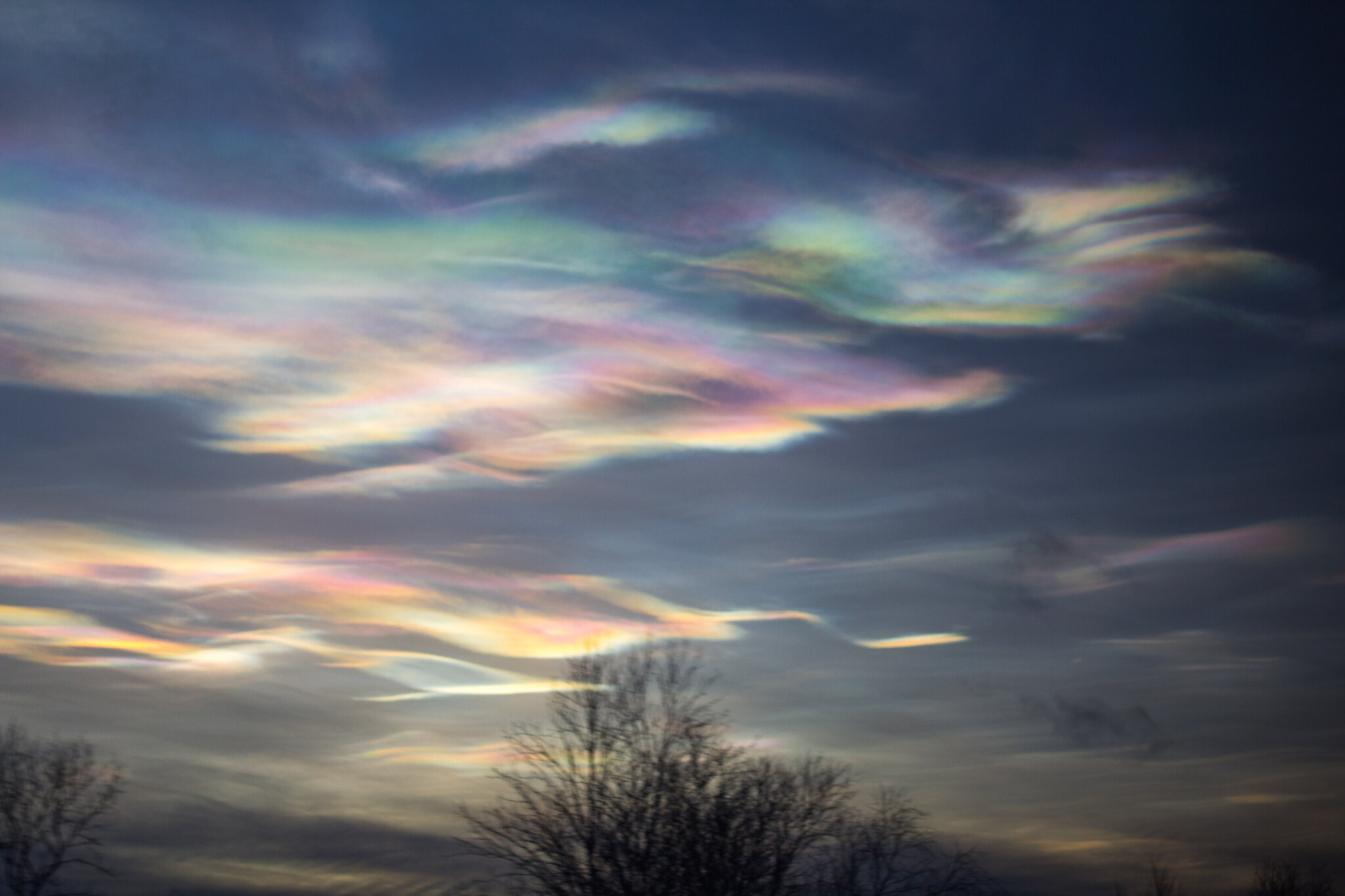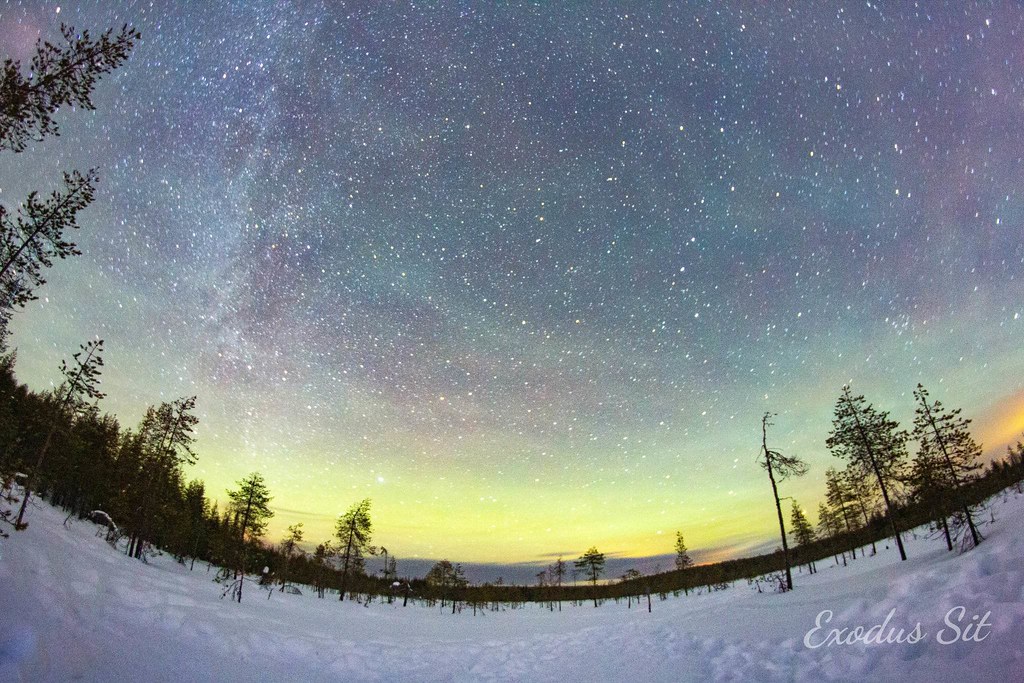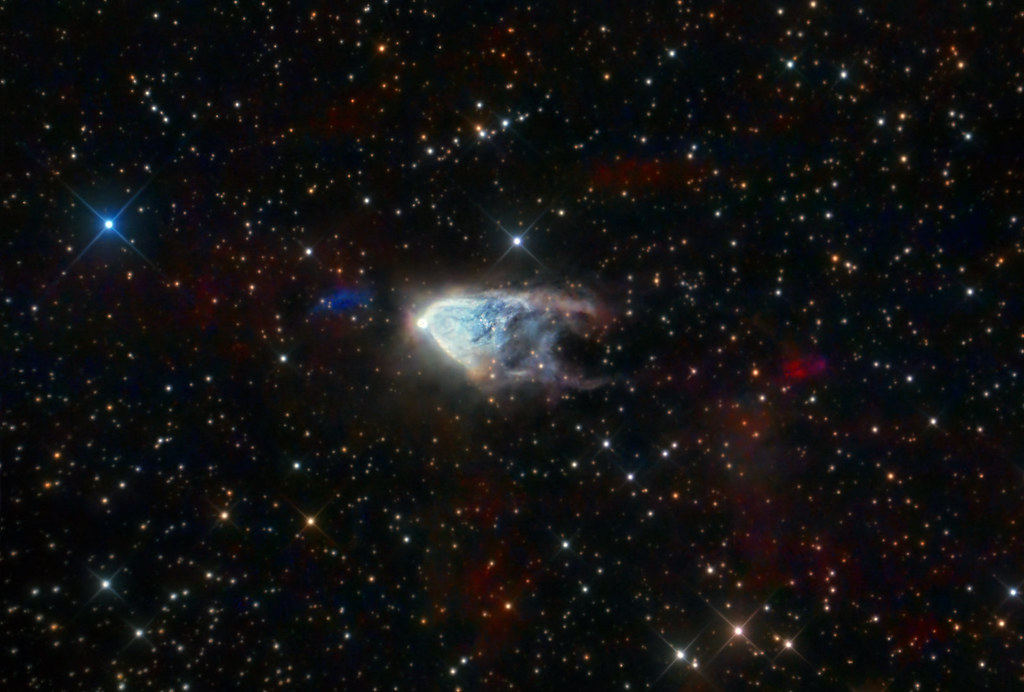Page 4 of 5
Re: Submissions: 2023 March
Posted: Wed Mar 22, 2023 3:44 pm
by Galactic-Hunter
15 hours on the Christmas Tree and Rosette Nebula at 135mm.
After spending 33 hours on the Christmas Tree with a small refractor, then 81 hours on it again with a monochrome camera and larger refractor (both can be viewed here:
https://www.galactic-hunter.com/post/ngc2264), I decided to spend 15 hours on it yet again but this time using a 135mm DSLR lens.
This was taken from my Bortle 9 backyard using a duo band filter, ASI2600MC, and Samyang 135mm f/2 lens.
The goal was of course to include both the Christmas Tree and the Rosette Nebula, which fit perfectly together in this field of view. I like to see all these gases that seem to interact altogether. The Rosette Nebula was much easier to bring out than the Christmas Tree nebulosity.
GEAR USED:
Camera: ASI2600MC
Telescope: N/A (135mm lens)
Mount: ZWO AM5
ACQUISITION DETAILS:
Total Exposure Time: 15 hours
Exposure Time per frame: 600 seconds
Filters: L-Ultimate
Credit:
Antoine and Dalia Grelin
www.galactic-hunter.com
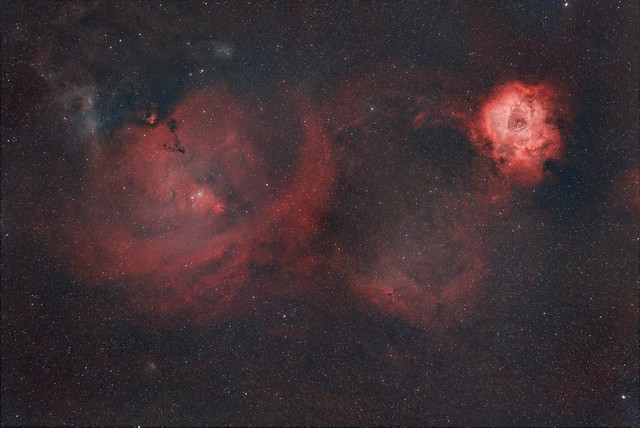 Xmas Tree and Rosette Nebula 135mm
Xmas Tree and Rosette Nebula 135mm
Re: Submissions: 2023 March
Posted: Wed Mar 22, 2023 3:44 pm
by clsit
Re: Submissions: 2023 March
Posted: Wed Mar 22, 2023 4:21 pm
by clsit
Re: Submissions: 2023 March
Posted: Wed Mar 22, 2023 4:41 pm
by IO_12
NGC 891: an edge-on unbarred spiral galaxy in Andromeda
Copyright:
Velimir Popov, Emil Ivanov
The galaxy NGC 891 is a nearby analog to the MilkyWay in terms of luminosity, color, and morphology with an apparent diameter of 40 kpc, and a rotation velocity of about 210 kms−1 (Oosterloo et al. 2007). Due to its proximity of 9.6 Mpc and its edge-on orientation (van der Kruit & Searle 1981), NGC 891 is one of the most observed and well-studied galaxies of the Local Universe. One of the reasons that this particular region of interest was extensively observed is because it hosts the supernova SN 1986J, discovered on August 21, 1986. Like the Milky Way NGC 891 reveals a general pattern of a magnetic field lying mostly in the plane (Montgomery & Clemens 2014). It was proposed the existance of a multicomponent dust distribution model for edge-on disk galaxy NGC 891, which is composed of a bulge, a thick disk associated with diffuse dust and old stellar populations, and a thin disk associated with clumpy dust and newly formed stars (Popescu et al. 2000). The halo of NGC 891 is known to contain slower rotating massive HI halo up to altitudes greater than 4 kpc from the disk (Swaters et al. 1997; Rand et al. 1990; Oosterloo et al. 2007).
Higher resolution: NGC 891
The next image is 100% crop from the original size:
The frames were taken with:
Telescope: 16" RC Astrograph at F/6.4
Camera: MORAVIAN C4-16000 CMOS;
Filter RVB- photometric (Bessel) and L (clear) 16x2min each, total 128 min, bin1.
http://www.irida-observatory.org
Re: Submissions: 2023 March
Posted: Thu Mar 23, 2023 9:40 am
by francescozela00
Hello there! i'm Francesco from Italy 22 years old, i'm getting stared into astrophotography with my Kodak PixPro AZ422 . To made this photo i use
the AZ422 142x of zoom and x-ray plate this is my first ever shot of the sun . Thanks for seeing my first photo . Sorry for the quality of image .
To made this image i extrapolate one frame from a video registration of zooming on the sun . And them i try to show up the Sunspots there are tree little here .
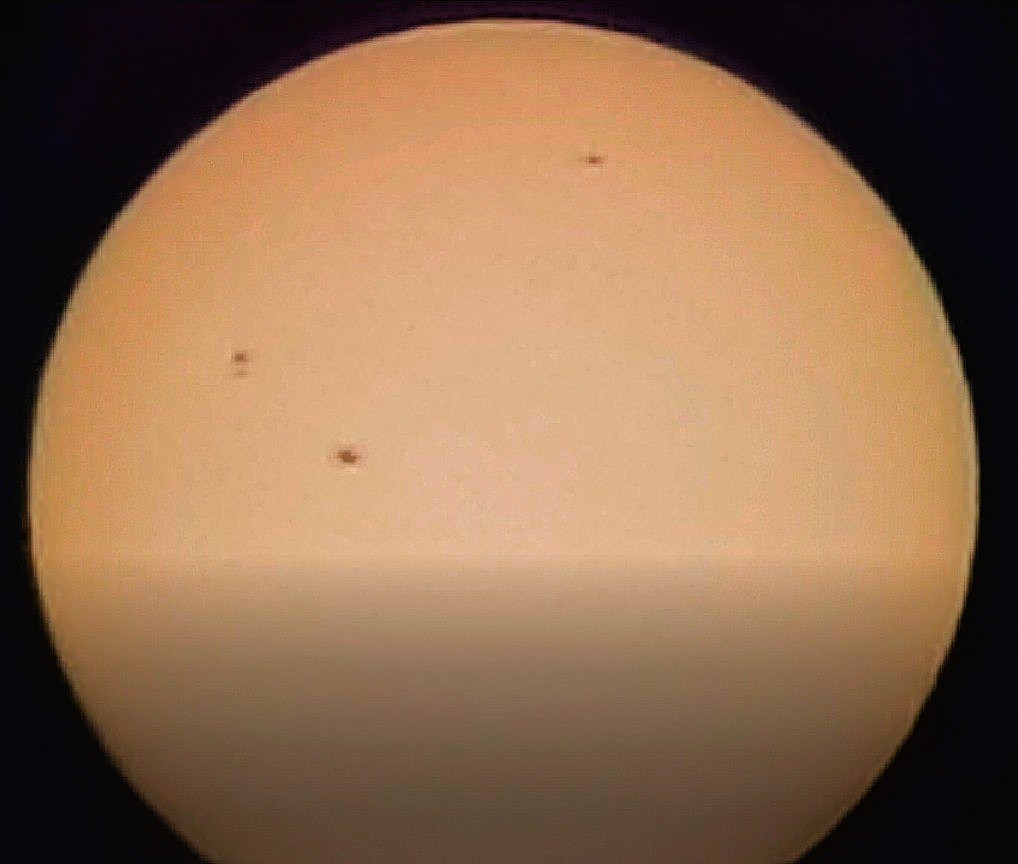 Sun & Sunspots
Sun & Sunspots by
Francesco Z, on Flickr
Re: Submissions: 2023 March
Posted: Thu Mar 23, 2023 6:29 pm
by Kinch
Re: Submissions: 2023 March
Posted: Thu Mar 23, 2023 8:18 pm
by wrightdobbs
The Milky Way over St. Marks Florida
Two compositions of the Milky Way Core over the St. Marks Lighthouse in Florida. Captured on March 21, 2023.
Florida's Forgotten Coast, one of the darkest places one can find for astrophotography in Florida. Located in northern portions of the state, this landmark is the St. Marks Lighthouse. It's the 2nd oldest lighthouse in the state and was originally built in 1831 before being rebuilt in 1842. Access to this location is difficult (legally) when the Milky Way rises in spring in the eastern skies. However, a short 25 minute window before twilight is available as soon as the primary gate opens at 6am. So I got to the gate at 6am and waited as it opened and quickly went to the location and snapped as many perspectives as I could in the 25 minute window before astronomical twilight brightened too much to get good detail in the core. This was the result. Couldn't ask for better way to start my day!
EXIF: 5 exposures for the sky at ISO2000, f/2.8, and 20s with Sony a7iii and Sigma 14mm f/1.8 lens. 5 exposures for the ground at ISO4000, f/2.8, 30s.
Copyright/Credit: Wright Dobbs (@wrightdobbs)
https://twitter.com/WrightDobbs
https://www.facebook.com/wrightdobbsphotography
https://instagram.com/wrightdobbs
https://wrightdobbs.darkroom.com
Re: Submissions: 2023 March
Posted: Thu Mar 23, 2023 8:19 pm
by Chris Peterson
M63 - The Sunflower Galaxy
I've been doing lots of work lately with new processing techniques, so I revisited some data I collected a couple of years ago. In particular, this image has been rigorously processed for color fidelity, utilizing the PixInsight Spectrophotometric Color Calibration method, which matches stars in the image to GAIA spectra and compensates for filter and sensor characteristics. Cool stuff.
Details:
QSI 660 camera on 250mm RC, Astronomic LRGB filters
Lum 64 x 120s (128 min) collected 2021-07-07
RGB 9 x 120s each collected 2021-07-29
Processed with PixInsight and Photoshop
Final image resolution 0.67 arcsec/pixel, 18 arcminute wide field
_
Re: Submissions: 2023 March
Posted: Fri Mar 24, 2023 12:45 am
by Astro_maa
This image shows the night of the moon illuminated by the light of the earth in a phenomenon known as the da Vinci effect or the glow of the earth. This image is not a composition or addition, but only one image in a very clear atmosphere through an 8-inch telescope.
You can clearly see the lunar terrain on the dark side of the moon.
The photo is from the Kuwaiti desert
https://www.instagram.com/p/CPgMEdJsBw0 ... _copy_link
Equipment:
Canon Ra
5sec (Single shot)
ISO1250
Celestron 8” HD
clear sky سماء صافية
Mohamaad alobidi
@Astro_MAA
Re: Submissions: 2023 March
Posted: Fri Mar 24, 2023 3:54 pm
by vanamonde81
A Vertical Moonrise
Copyright: György Soponyai
On early dawn of 18th March I observed and photographed the rising crescent Moon from Singapore. This small city-state lies in the proximity of the Equator, where celestial objects rise and set vertically.
In the foreground the 206m high Marina Bay Sands hotel and the lotus-flower-shaped ArtScience museum is visible at the shore of Marina Bay. The photos of the Lunar crescent were taken in every 5 minutes.
 2023.03.18.
2023.03.18.
Canon EOS 5D Mark II + Canon EF 50/1.8
3 x 1/25 sec, F/2.5, ISO 320
Re: Submissions: 2023 March
Posted: Fri Mar 24, 2023 5:06 pm
by Meiying Lee
Lunar Occultation of Venus
Photo description:
A rare astronomical phenomenon-Lunar Occultation of Venus happened in Taiwan tonight.
I stacked 5 consecutive shots with the software Startrails. It can be seen that the brightness of Venus gradually weakens from touching the dark part of the moon to disappearing, and finally disappears.
The photos were taken from 7:50:35 pm to 7:51:15 pm on March 24, with 10 seconds between each photo.
Video link:
https://youtu.be/1pwoskU2izk
Equipment Details: Canon R7+600mm Lens
Post-processing Details: 5 consecutive shots stacked together with the software. Startrails.
Location : Tainan, Taiwan
Time: March 24, 2023 7:50:35 PM to 7:51:15 PM
Photographer : Meiying Lee (李美英)
Re: Submissions: 2023 March
Posted: Fri Mar 24, 2023 5:15 pm
by ashwindeshpande

- Lunar occultation of Venus from Bangalore, Karnataka
Lunar occultation of Venus
Time - 5:40 PM
Place - Bangalore, Karnataka
Gear - Nikon D500 + Nikon 200-500
Re: Submissions: 2023 March
Posted: Fri Mar 24, 2023 9:19 pm
by AstraPharmaQ8
Here is my submission of M81:
 M81 LHaRGB
M81 LHaRGB by
Ali Alobaidly, on Flickr
The final Image was taken in three sessions:
Luminance (2/16/2023):
Ha (3/17/2023)
RGB (3/22/2023)
Chroma Blue 36 mm: 31×180″(1h 33′)
Chroma Green 36 mm: 31×180″(1h 33′)
Chroma H-alpha 3nm Bandpass 36 mm: 71×300″(5h 55′)
Chroma Lum 36 mm: 108×180″(5h 24′)
Chroma Red 36 mm: 31×180″(1h 33′)
Integration:
15h 58′
Avg. Moon age:
16.93 days
Avg. Moon phase:
14.82%
Equipment:
Telescope: Celestron EdgeHD 9.25"
Camera: ZWO ASI2600MM Pro
Mounts: Sky-Watcher EQ6-R Pro
Filters:
-Chroma Blue 36 mm
-Chroma Green 36 mm
-Chroma H-alpha 3nm Bandpass 36 mm
-Chroma Lum 36 mm · Chroma Red 36 mm
Accessories:
-Celestron 0.7X Reducer EdgeHD925 (94245)
-ZWO EFW 7 x 36mm
Re: Submissions: 2023 March
Posted: Fri Mar 24, 2023 9:29 pm
by astrosirius
NGC 2261 HUBBLE'S VARS NEBULA
https://www.flickr.com/photos/194102627@N04/
Copyright: Lluís Romero
https://live.staticflickr.com/65535/527 ... 16ab_o.jpg
Details:
Telescope: RC16"
Mount: ASA DDM85XL
Reducer: Massimo Riccardi Reducer 0.75x
CMOS:QHY268C (resolution 0.32"/px)
Total exposure: 19h (230x300sec)
Re: Submissions: 2023 March
Posted: Sat Mar 25, 2023 5:41 am
by astronajar
M101 - Pinwheel Galaxy
Author: Fermin Jiménez Najar
Image link:
https://astro.najar.ca/en/gallery/deep- ... alaxy.html
https://astro.najar.ca/en/gallery/deep- ... alaxy.html
This image was taken in 3 nights from Ahuacatepec, Jalisco, Mexico.
https://www.google.com.mx/maps/place/Ah ... BJ6BAhjEAg
From March 17th to 20th, 2023
16.5 hours integration, in a span of 3 nights.
Technical Data
Gain: 0, Offset: 50
Exposure: 16 hrs 30 min
(RGB 152 shots x 5 min)
(L-Enhance 46 shots x 5 min)
Focal length: 952.5 mm (127 mm x f/7.5)
Calibration: darks, flats, darkflats
Explore Scientific 127 mm Triplet Carbon Fiber
ZWO ASI 2600 MC Pro
IOptron CEM 60
Software: NINA + PixInsight + Affinity Photo
Re: Submissions: 2023 March
Posted: Sun Mar 26, 2023 8:31 am
by ExplorerEGYWO
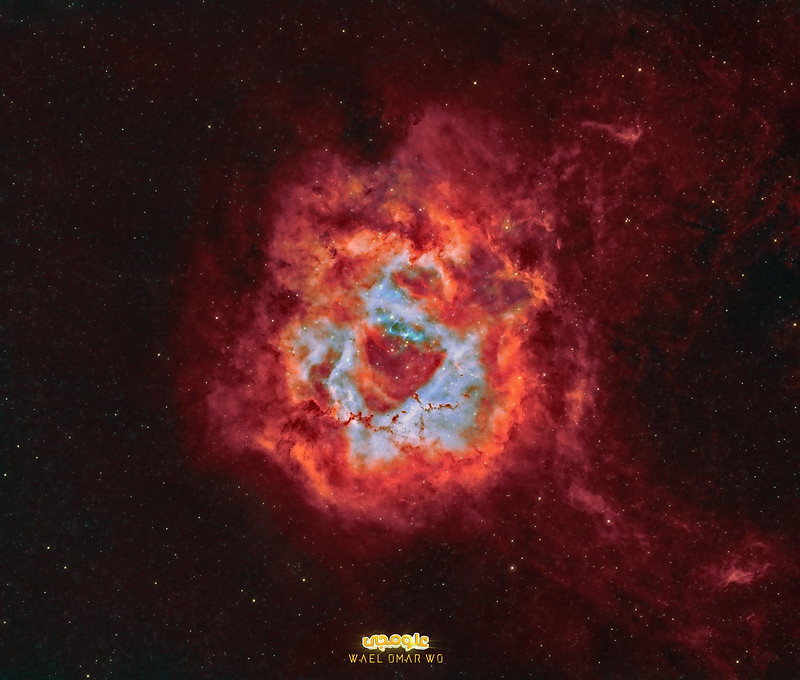 Cosmic Flower
Cosmic Flower by
Wael Omar, on Flickr
SH2-275 " Rosette Nebula".
The nebula is an H II region located near one end of a giant molecular cloud in the Monoceros region of the Milky way galaxy. Its far away from earth by 5000 light years and has a diameter of 130 light years so it’s a real monster in the sky. The radiation from the young stars excites the atoms in the nebula, causing them to emit radiation themselves producing the emission nebula we see. The mass of the nebula is estimated to be around 10,000 solar mass.
Equipment used:
Camera: ZWO 294 mm pro
Scope : Redcat 51- 250 mm focal length
Settings :
Ha : 23 * 600 seconds , Gain 120
OIII : 20*600 seconds, Gain 120.
The image is processed in HOO palette , This was a real challenge as I make the session in Cairo , Bortle 9 . I did a lot of trials to remove the light pollution effect and background extraction then many masks to sharpen and enhance the colors in the nebula.
Location : Cairo , EGYPT.
Credit : Wael Omar WO/
https://www.instagram.com/waelomar_astrophotography/
Re: Submissions: 2023 March
Posted: Sun Mar 26, 2023 4:30 pm
by Meiying Lee
The Lunar Occultation of Venus
Photo description:
The Lunar Occultation of Venus on March 24th was fortunate enough to be observable in Taiwan. This composite photo records Venus gradually darkening and disappearing behind the moon after making contact with it. The entire occultation process took about 40 seconds, because Venus is not just a dot, but has a disk size!
Equipment Details: Canon R7+600mm Lens
Post-processing Details: Arrange 5 photos together in PowerPoint.
Location : Tainan, Taiwan
Time: March 24, 2023 7:50:35 PM to 7:51:15 PM
Photographer : Meiying Lee (李美英)
viewtopic.php?p=329992#p329992
Re: Submissions: 2023 March
Posted: Sun Mar 26, 2023 5:42 pm
by rhess
Arp 84
Arp 84 is the combination of gravitationally-interacting galaxies NGC 5395 and NGC 5394. They are around 160 million light years from Earth in the constellation of Canes Venatici.
http://www.astrofotografie-hess.at/arp84.html
Telescope: ASA EQ1000 f7 - ASA 1 m equatorial telescope
Location: Vega Observatory - House of Nature Salzburg, Austria
Camera: FLI Microline 16803
Exposure time: 26x7min Luminance, 14x7min RGB
Copyright: Rochus Hess
Website:
www.astrofotografie-hess.at
Re: Submissions: 2023 March
Posted: Sun Mar 26, 2023 7:55 pm
by rkas12
Sharpless 115 & 116 (The Perek-Kohoutek 085+04 planetery nebula) –
And Many others
This image features many interesting celestial objects in Cygnus, the brightest star in that constellation. First and foremost, there are two Sharpless objects known as
SH2-115 &
SH2 116. The first one is a very large, faint emission nebula approximately 2 degrees northwest of Deneb. Its neighbor, SH2-116, is a small round planetary nebula, featured also in this image. Secondly, they are many
LBN objects in the field of view – too much ! Let’s pause there for the time being….
Acquisition details:
Copyright: @ae_astrophotoons
Location: Spain, my remote observatory
Telescope: Takahashi TOA 130 NFB
Camera: ASI 6200 mm pro
Mounts: 10 Micron 1000 HPS
Filters:
-Chroma Blue 50 mm
-Chroma Green 50 mm
-Chroma Red 50 mm
-Chroma H-alpha 3nm Bandpass 50 mm
-Chroma Sii 3nm Bandpass 50 mm
-Chroma Oiii 3nm bandpass 50mm
Integration time: 22H
https://www.flickr.com/photos/197387915 ... ed-public/
https://www.flickr.com/photos/197387915 ... ed-public/
Re: Submissions: 2023 March
Posted: Sun Mar 26, 2023 9:09 pm
by Ayiomamitis
Solar Active Regions 3256 - 3264
http://www.perseus.gr
Copyright: Anthony Ayiomamitis
The Sun is quite active at the moment with various active regions on display all over the solar disk.
For further details in relation to this result, please see
https://www.perseus.gr/Astro-Solar-Suns ... 230326.htm .
Ceres, M100 Mar. 26th
Posted: Mon Mar 27, 2023 12:16 am
by Efrain Morales
Dwarf Planet 1 Ceres (L) transiting and four Galaxies NGC 4328, PGC 40214, NGC 4322 and the large Galaxy M100. on March 26th. (One hour time lapse)
Re: Submissions: 2023 March
Posted: Mon Mar 27, 2023 6:35 pm
by vanamonde81
How the Moon Meets the Horizon
Copyright: György Soponyai
With these photos I would like to demonstrate the varigeation of moonrises and moonsets. The closer to Equator, the Moon rises and sets by a steeper and steeper angle.
The upper left photo sequence was taken two weeks ago in Singapore. This small city-state lies in the proximity of Earth's Equator, where celestial objects hit the horizon vertically. In the foreground the 206m high Marina Bay Sands hotel and the lotus-flower-shaped ArtScience museum is visible at the shore of Marina Bay.
I met Belém Tower (Torre de Belém), the symbol of Lisbon, Portugal in September, 2017. This 500-year-old fortified tower stands at the mouth of Tagus river and since 1983 it's a UNESCO World Heritage Site because of its significant role played in the Portuguese maritime discoveries. Standing on 38th Northern latitude, the angle of moonset is quite steep.
Budapest
(46th Northern Latitude), May, 2016. The lights of Buda Castle on the banks of River Danube harmonizing with the setting Moon. This location is also a UNESCO World Heritage Site.
The lower right photo was taken at the middle of Tromsø Bridge
(69th Northern Latitude) depicts the one-hour-long path of the setting Moon when the snow of the mountains was being painted to pale pink by the Midnight Sun above the Northern horizon.
 2016.05.08. Budapest, Hungary
2016.05.08. Budapest, Hungary
2017.09.23. Lisbon, Portugal
2019.06.14. 23:47 - 2019.06.15. 00:47 Tromsø, Norway
2023.03.18. Singapore
Re: Submissions: 2023 March
Posted: Mon Mar 27, 2023 7:33 pm
by sydney
Ceres crosses M100
Dwarf planet Ceres passes in front of spiral galaxy M100 on the night of March 26-27. Ceres is about 13.3 light-minutes away from Earth while M100 is about 56 million light-years further out. Image shows Ceres every 30 minutes from UT 00:22 - 06:52 on March 27, 2023. Image is a composite of:
20x600 sec luminance
30x420 sec RGB (10 exposures per channel) and
13x3 sec luminance for Ceres
Telescope: C14 Edge with Celestron 0.7 reducer
Mount: AP 900GTO
Camera: SBIG 10XME
Filters: Astrodon I-series
Nick Pavelchak
https://www.astrobin.com/2qrbdj/
Hope you enjoy!
Re: Submissions: 2023 March
Posted: Tue Mar 28, 2023 12:50 am
by Gianluca
Re: Submissions: 2023 March
Posted: Tue Mar 28, 2023 2:57 pm
by Marii
Hi everyone !
I am glad to share my latest nightscape.
 Growing together
Growing together by
Marion Kabac, sur Flickr
March 25th 2023, 9P.M. at Arvieux, France (Queyras natural park)
This image came to my mind while I was sleeping ; in my dreams I was dancing with a small tree under the starry sky. I woke up and immediately drew my vision to remember it and recreate it later with photography. The first thing - and the hardest thing - was to find the perfect tree, a lone and young one with a plain shape, just few branches. Then I waited for the weather to be clear enough.
The night I took the shot, the crescent moon (19%) was just under the Pleiades. First of all, I photographed a series of self-portraits in a ballet dress, I imagined a pose that suggested dance, a romantic waltz with the tree. Right away, I took 6 additional images to get a wider panorama.
Note that the amber light in the foreground comes from street lights in a small village nearby.
EXIFS :
Canon 6dii + Sigma 35mm f/1.4 Art
4 seconds at f/2.0, 3200 iso
panorama of 7 single shots
self-portrait shot achieved with a remote + 10 seconds timer
edited with Lightroom and Photoshop
Have a nice day,
Marion
 Xmas Tree and Rosette Nebula 135mm
Xmas Tree and Rosette Nebula 135mm Xmas Tree and Rosette Nebula 135mm
Xmas Tree and Rosette Nebula 135mm
